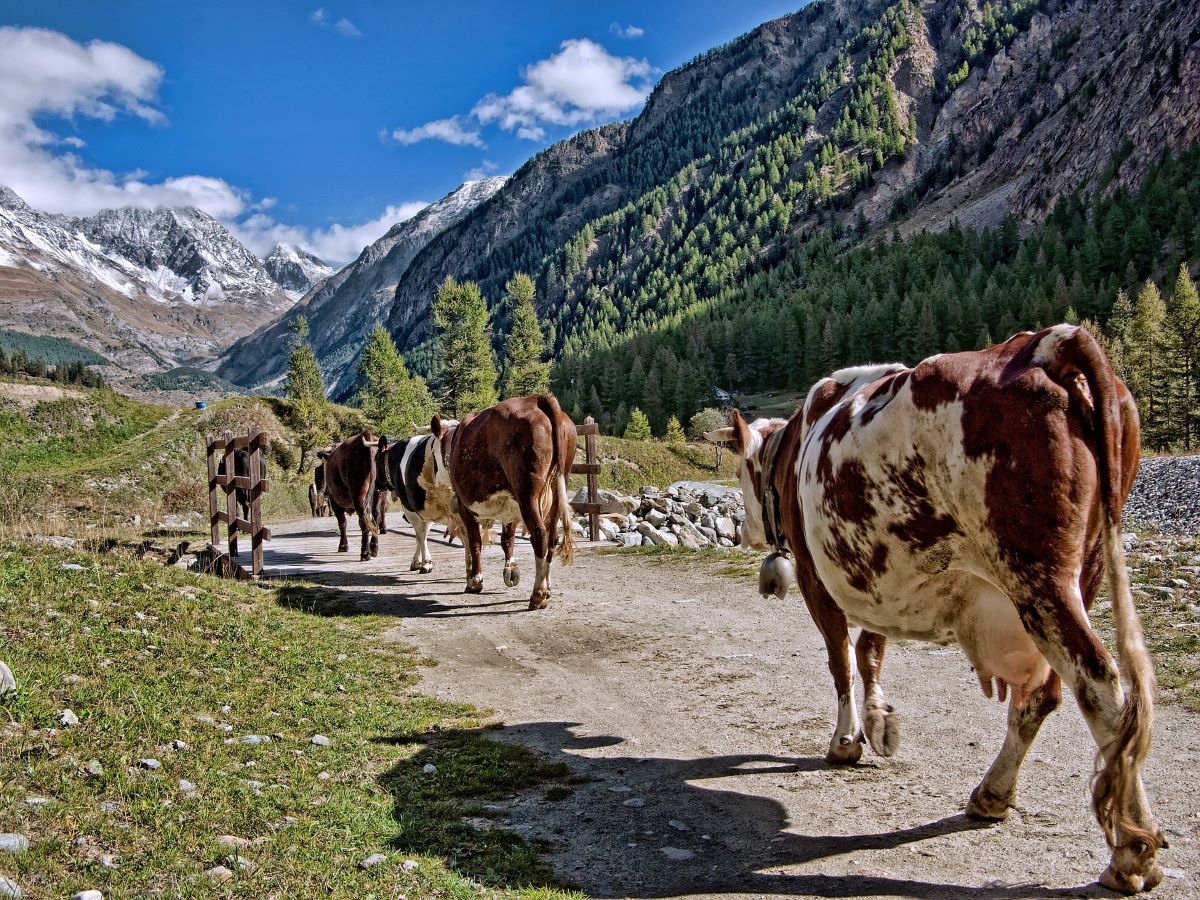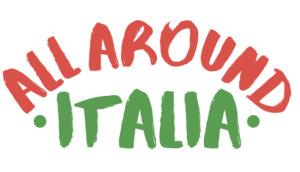For me, polenta concia is food that evokes a feeling. It takes me back to the warm, festive moment when I first enjoyed it in Valle D’Aosta.
Over the Christmas holiday, my husband decided to spend a weekend in Valle D’Aosta. I had never been and was excited to visit Italy’s tiniest region.
As we entered Valle D’Aosta, all street signs became multilingual in Italian and French, the region’s two official languages. Some also included directions in local dialect. Although not far from Piemonte – where my husband is from, it felt like we had entered a totally different environment.
Our first stop was Aosta, the region’s capital. Surrounded by mountains, the quaint city was cheerfully decorated for Christmas. Alpine choirs sang folk music in the streets, and little marketplaces scattered about featured locally-made gifts.
Walking around, we saw the Arco di Agosto and noticed multiple other Roman ruins. We discovered that, after Lazio, Valle d’Aosta is the Italian region with the most visible Roman ruins – earning Aosta the nickname of “the Rome of the Alps”.
After a long, cold day in Valle D’Aosta, we drove on to Courmayeur, a small town at the base of the largest Apline mountain peak – Monte Bianco. Upon reaching Courmayeur, night had fallen, and we were tired. Our plan was to find a place for a quick bite and then call it a day.
We ended up in a small restaurant’s basement, where I tasted my first polenta concia valdostana: a buttery, cheesy, absolutely delicious polenta served piping hot in a casserole dish.
In Valle D’Aosta, polenta concia is a simple, but rich, dish made with just four ingredients: cornmeal, water, butter, and fontina cheese.
Derived from the word “acconiata”, meaning “condita” or “flavored/prepared”, polenta concia is cornmeal polenta mixed together with generous amounts of butter and cheese. It is sometimes also referred to as polenta grassa, or “fat” polenta. Other regions – such as Piemonte and Lombardia – have their versions of the dish. The version valdostana is unique for the inclusion of the prized local cheese – fontina.
Since 1270, exclusively using raw milk from local cows, the people of Valle D’Aosta have been making fontina. In 1996, the European Union granted fontina a Denominazione di Origine Protetta (D.O.P.) status. Holding producers to strict traditional standards, the D.O.P. stamp guarantees quality and authenticity. The D.O.P designation also offers transparency to consumers and protection for the hardworking producers using traditional methods.
The name “fontina” is likely derived from “fontis” or “fondis”, rooted in French language and meaning “melt”. Fontina’s semi-soft consistency means that it melts evenly when exposed to heat, making it the perfect accompaniment to hot polenta.
Locals of the Alps have eaten (and still eat) polenta concia to warm up and fill up during frigid winter days.
Requiring just a handful of local ingredients, polenta concia is easy to make and has long been a part of the region’s culinary history, the cucina povera of Valle D’Aosta.
Cornmeal polenta is best made in a large pot for a big group as it typically requires constant stirring for 40 minutes or longer. As tedious as stirring for this long may sound, my family finds it festive. We make polenta when our kitchen is full of family members or friends. Everyone takes a turn stirring as we talk and spend time together. Then, adding fontina valdostana and butter, we sit down to fill our enjoy and re-energize with our polenta concia. Enjoying such a rich and delicious dish, it’s easy to close your eyes and imagine being at the foot of Monte Bianco.

Italian Vocabulary related to Polenta Concia
All Around Italia helps you learn about Italy and also learn Italian! Here are some words related to polenta concia. Have you heard these before?
mais – corn; another word in Italian for corn is granturco
La polenta concia è a base di farina di mais. / Polenta concia is made with cornmeal.
fondere – to melt
La polenta concia valdostana viene preparata fondendo la fontina e il burro nella polenta. / Polenta concia from Valle d’Aosta is prepared by melting fontina and butter into the polenta.
gelido – freezing cold
Le giornate in Valle D’Aosta sono spesso gelide. / Days in Valle D’Aosta are often freezing cold.
Make Polenta Concia
Bring Italian into your everyday life by cooking polenta concia.
The recipe for polenta concia valdostana is very simple. It just takes some time and arm strength to make – there is a lot of stirring! I like making this when we have company, and everyone takes a turn stirring.
In the original recipe, you add a mere two ingredients to the polenta – quality butter and Fontina D.O.P. cheese. It’s important that you get the real fontina hailing from Valle D’Aosta to make the polenta concia taste the way it should.
Today, you’ll also find recipes that add milk and/or toma cheese. Most commonly, you mix ingredients together on the stovetop. You can also add the cooked polenta to a casserole dish and bake in the cheese.
Below, you’ll find the recipe our family uses for polenta concia valdostana loosely adapted and translated from this one from sky.it.
Ingredients (4-6 servings)
3 ¼ cup cornmeal polenta flour – NOT instant (400 grams)
2 ½ cup cubed Fontina D.O.P. cheese (200 grams)
⅔ cup cubed high-quality butter (150 grams)
8 ½ cups water (2 liters)
salt
Preparation
Pour water into a large, tall pot (ideally a copper pot if you have one – I don’t).
Add some salt to the water and boil. When the water is boiling, slowly pour in the cornmeal while stirring vigorously with a wooden spoon or a whisk. Keep stirring with the flame on high for 5 minutes. Then, lower the flame but continue to stir every few minute so clumps don’t form.
After 40-45 minutes of cooking, add the cubed cheese and butter to the polenta pot while still on the burner.
Once melted in, enjoy! Or, if you prefer, transfer to a casserole dish, grate some cheese on top, and crisp in the oven for a few minutes before eating.
Buon appetito!


